Terek Sandpiper Xenus cinereus
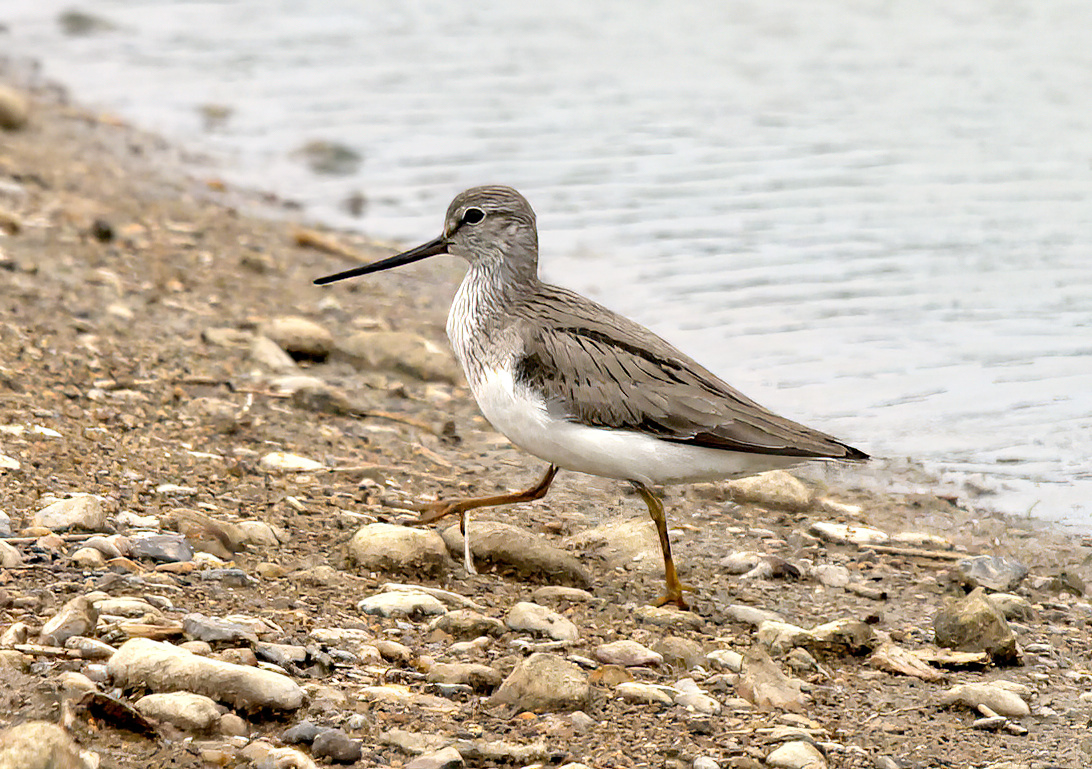
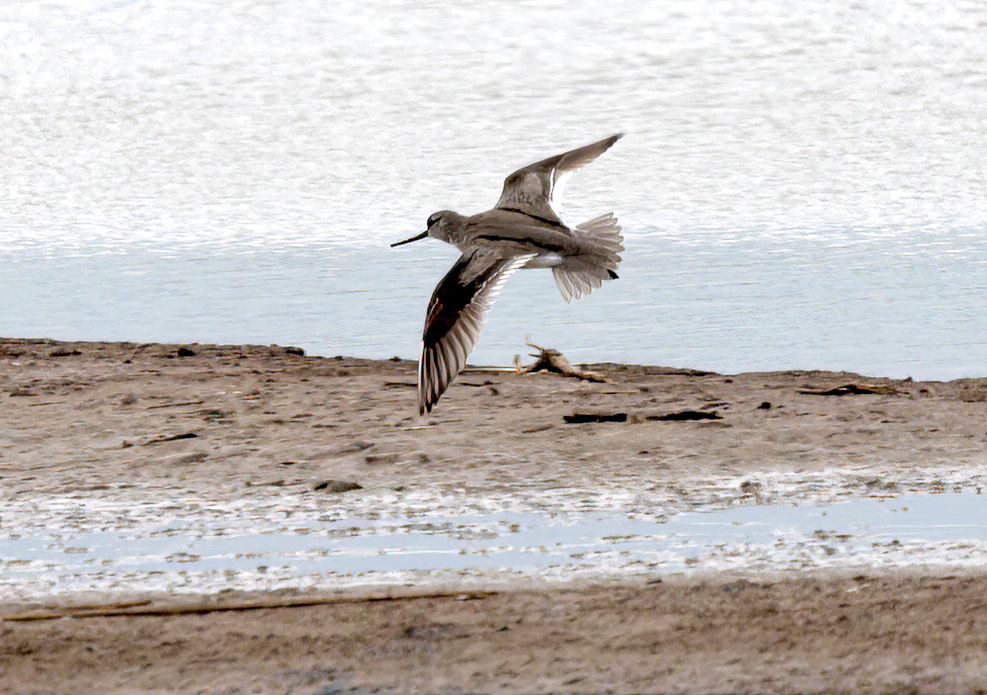
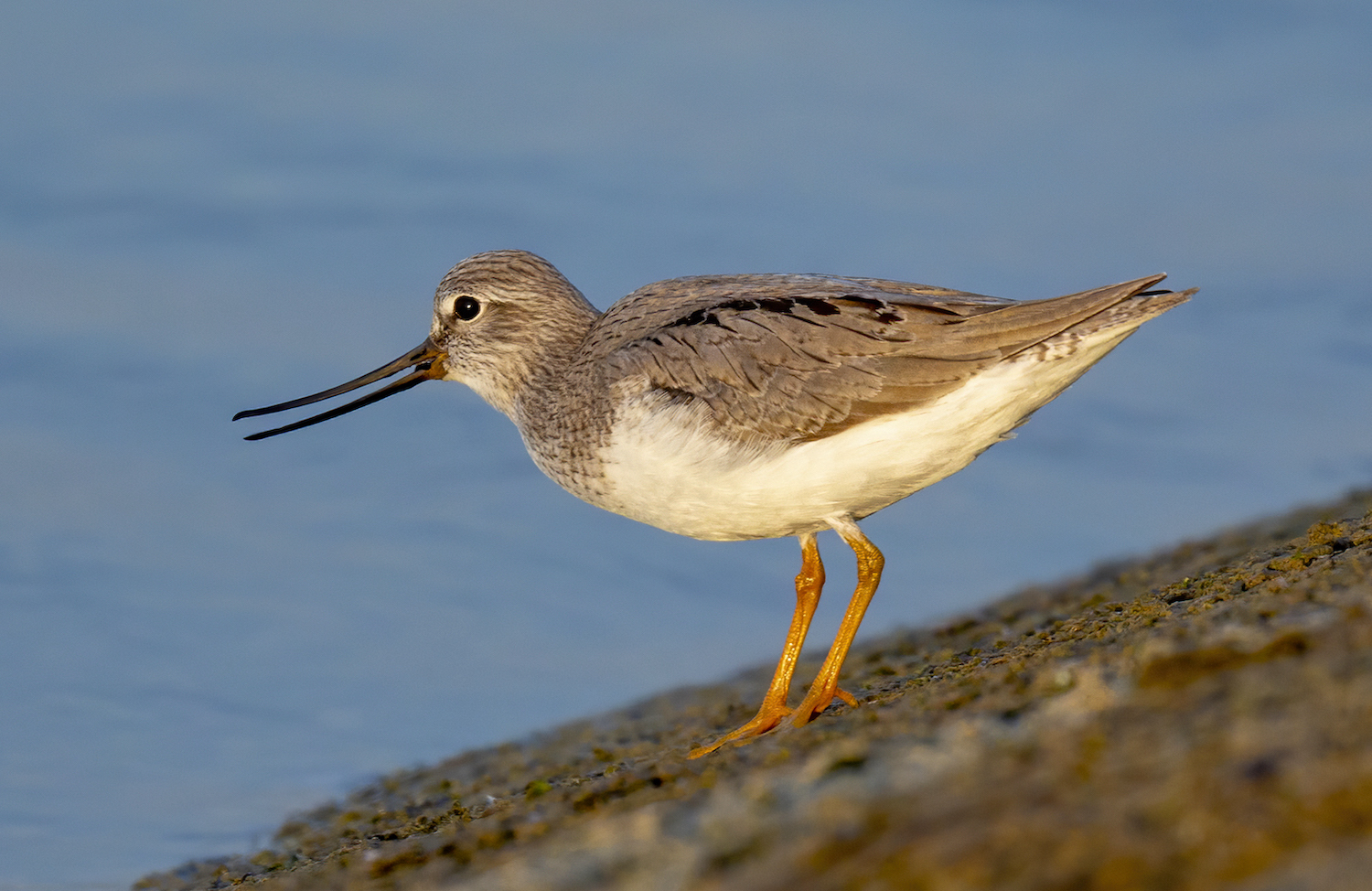
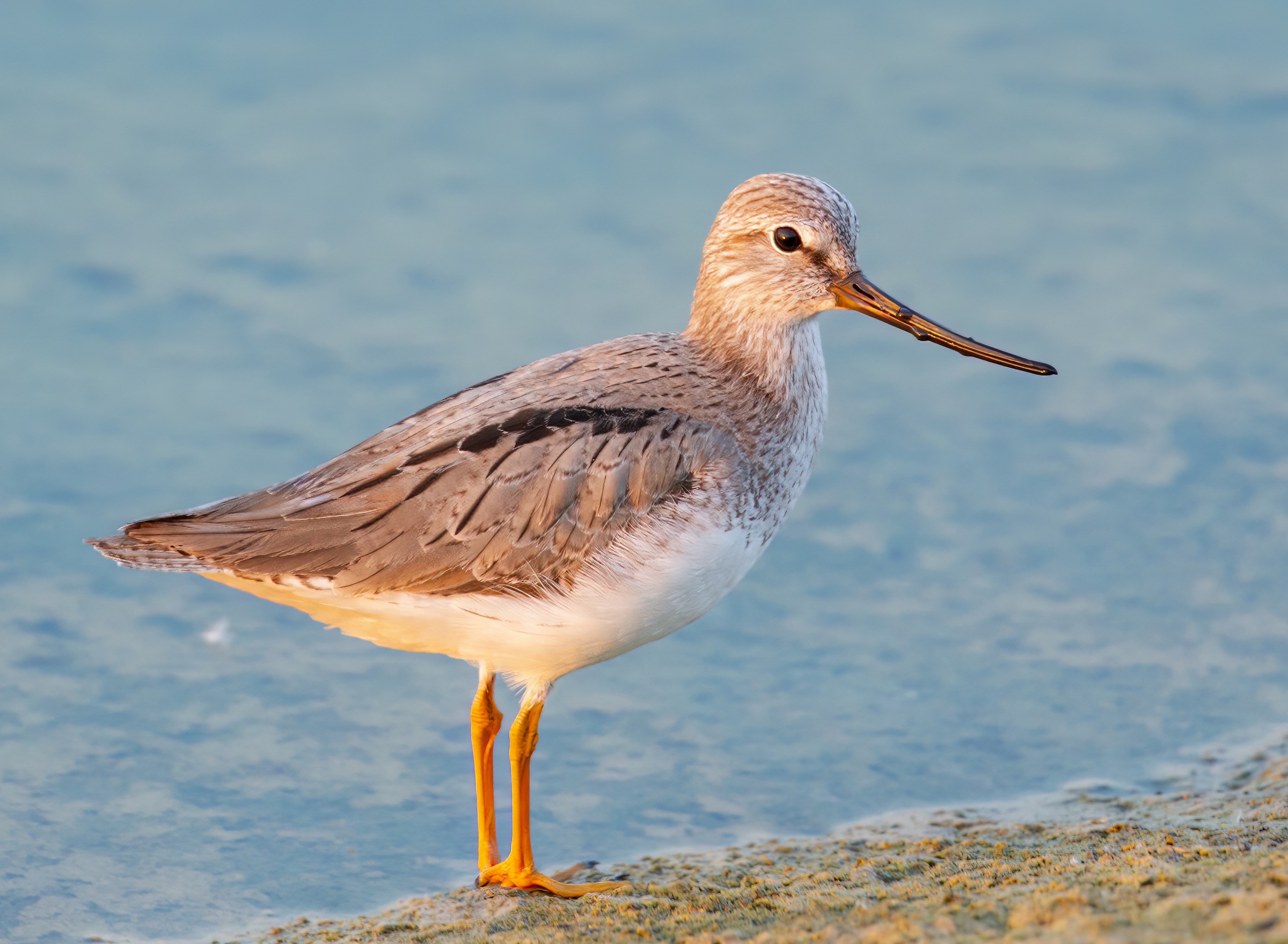
A relatively recent addition to the county list with the first record a one-day bird at Gibraltar Point NNR in July 2005 located feeding near the mouth of a creek at the south end of the shore. It appeared to be moved on by a heavy rain shower and presumably moved off into The Wash with the Dunlin with which it was associating. The second record was at the same site in June 2009 and remained long enough to be seen by a wider audience. It was presumed to be the bird seen the day before on Teesside. The third record at Covenham Reservoir in May 2014 obliged by staying two days and was heard to occasionally burst into song. A second bird in 2014 was considered to be a different individual and was photographed at Far Ings NR, Barton on Humber in August and seems likely to have been the individual seen five days previously at Easington, Yorkshire. The fifth record was a bird found at Alkborough Flats in May 2018 and was seen by a select few as it only stayed for 30 minutes only to then fly off on to the Humber, never to be seen again.
The first British record was not until May 1951 in Sussex and there have been 94 in total to 2020 averaging about two per year, but with 4-5 in recent good years (1986, 1995, 1998, 1999, 2005, 2014, 2015, 2018).
| Site | First date | Last date | Count | Notes |
| Gibraltar Point NNR | 11/07/2005 | - | 1 | On southern mudflats |
| Gibraltar Point NNR | 17/06/2009 | - | 1 | On Tennyson's Sands |
| Covenham Reservoir | 19/05/2014 | 20/05/2014 | 1 | |
| Far Ings NR, Barton upon Humber | 12/08/2014 | - | 1 | |
| Alkborough Flats | 18/05/2020 | - | 1 |
Finder’s report: Terek Sandpiper at Gibraltar Point NNR, July 18th, 2005, first county record.
by G. Garner
Note: this account is based on the original BBRC submission. There were three British records in all in 2005 bringing the British total to 66 at that time.
Circumstances
As contract warden at Gibraltar Point my duties involved monitoring and protection of a Little Tern colony. On the morning of July 18th, I entered the fenced-off sanctuary area at about 15.30 hr. to check on the remaining Little Tern nests. It was close to high tide and although it was a neap, it was high enough to push the waders into close view. I decided to scan the estuary before checking the tern colony. The annual Sandwich Tern roost was starting to build up on the mud flats and it was these that I was interested in. Having checked these, I started scanning left and almost straight away I picked out a smallish wader on its own by the mouth of a small creek foraging on the mud.
I immediately thought Terek Sandpiper but assumed my initial judgement would be proved wrong, but the huge, upturned bill on a smallish, short-legged wader seemed right. After 10 seconds it flew a short distance and the dark wings with a distinctive white trailing edge was unlike anything I could recall seeing before. On landing it ran forward with its head pushed out and bill low to the ground. Still having seen it for under 30 seconds I got on to the short-wave radio that we carry on the reserve. Paul Troake (PT, Assistant Warden) answered. I asked him to describe a Terek, still not believing that it was one. He said what I knew: like a Common Sandpiper with a long upturned bill. As my bird fitted with this and with its wing pattern and behaviour also sounding good, I suggested that he come and look.
I then watched the bird for a very long 10-15 minutes till PT arrived, hoping that I wouldn’t be a lone observer as I was now 100% sure on its ID. When he did arrive, he confirmed that it was a Terek. Kevin Wilson (Site Manager) was also eventually located and after another long 20 minutes or so of keeping watch on the bird, he also arrived and was able to see it. By this time a small flock of Dunlin had congregated by the Terek, and it became loosely associated with them. However, it remained faithful to a small area of mud by the mouth of the creek where it was first seen. When a heavy rain shower arrived, we headed back to the Tern Warden’s hut for cover. After about 15 minutes when it had stopped, we went back to relocate the bird. It could not be refound and is presumed to have moved further south into The Wash. It did not appear at either high tide on the next day.
Description
General appearance – body size of a Ringed Plover, but smaller than Turnstone, appearance similar to Common Sandpiper. It was not heard to call.
Head and upperparts – pale on the breast sides. Head, breast, back and wings were a pale greyish colour. In flight the dark wings showed a distinctive, thin white trailing edge extending to base of tail.
Underparts – white.
Bare parts – very long bill, particularly for a wader with not especially long legs. Upturned bill also very characteristic and unlike any small wader. Legs appeared to be orangey-pink.
Behaviour – as expected of a typical, mud-flat inhabiting wader. Occasionally had distinctive action due to bill size: with head low and extended and bill stretched low over the mud, as it ran over the mud. Generally kept on its own, though it associated with a Dunlin flock later on. Favoured feeding close to the water’s edge.
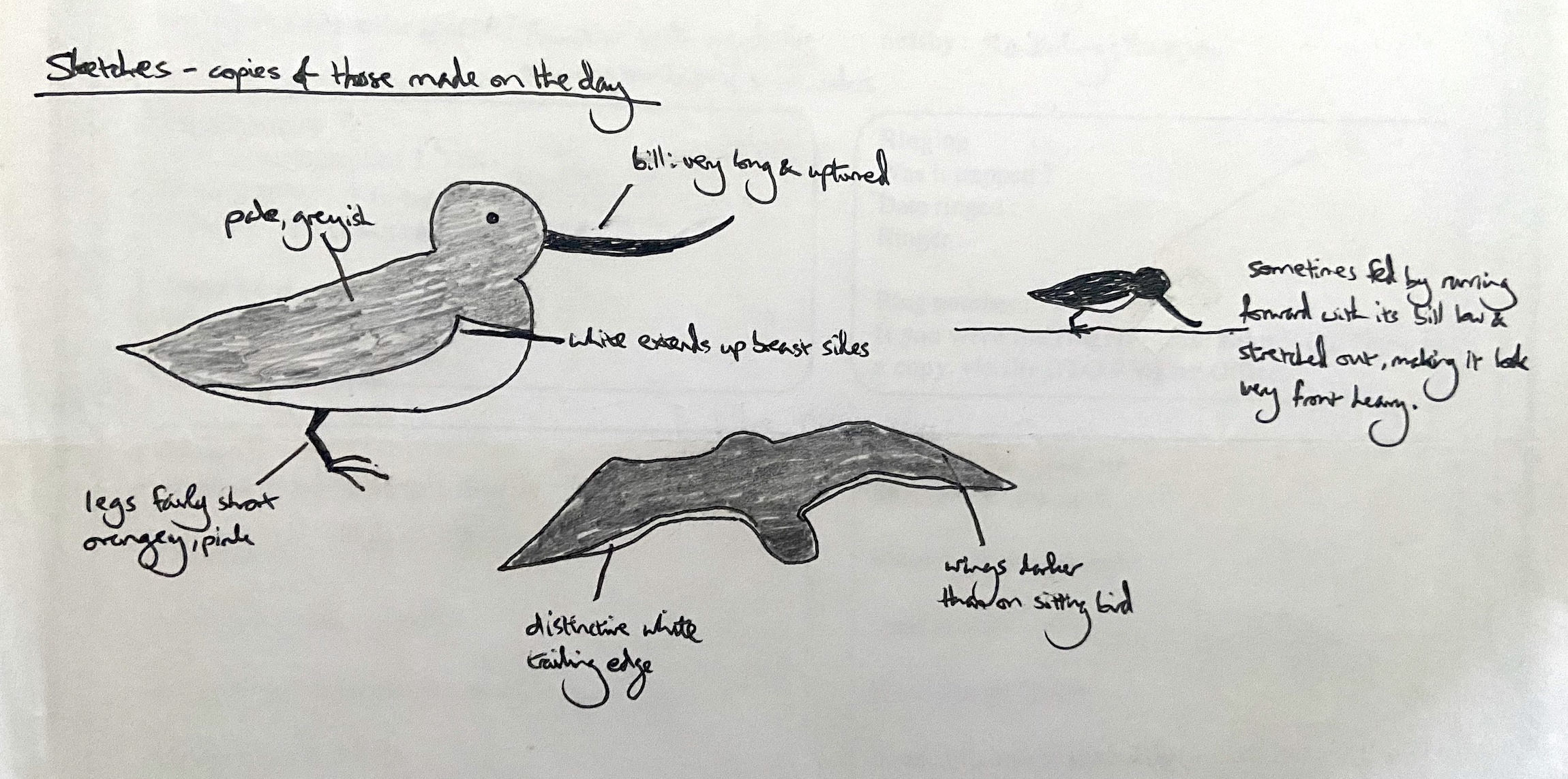
Sketches of the Terek Sandpiper at Gibraltar Point, July 18th, 2005 (G. Garner); in lieu of photographs sketches are always vauable.
(Account as per new Birds of Lincolnshire (2021), included September 2022)

